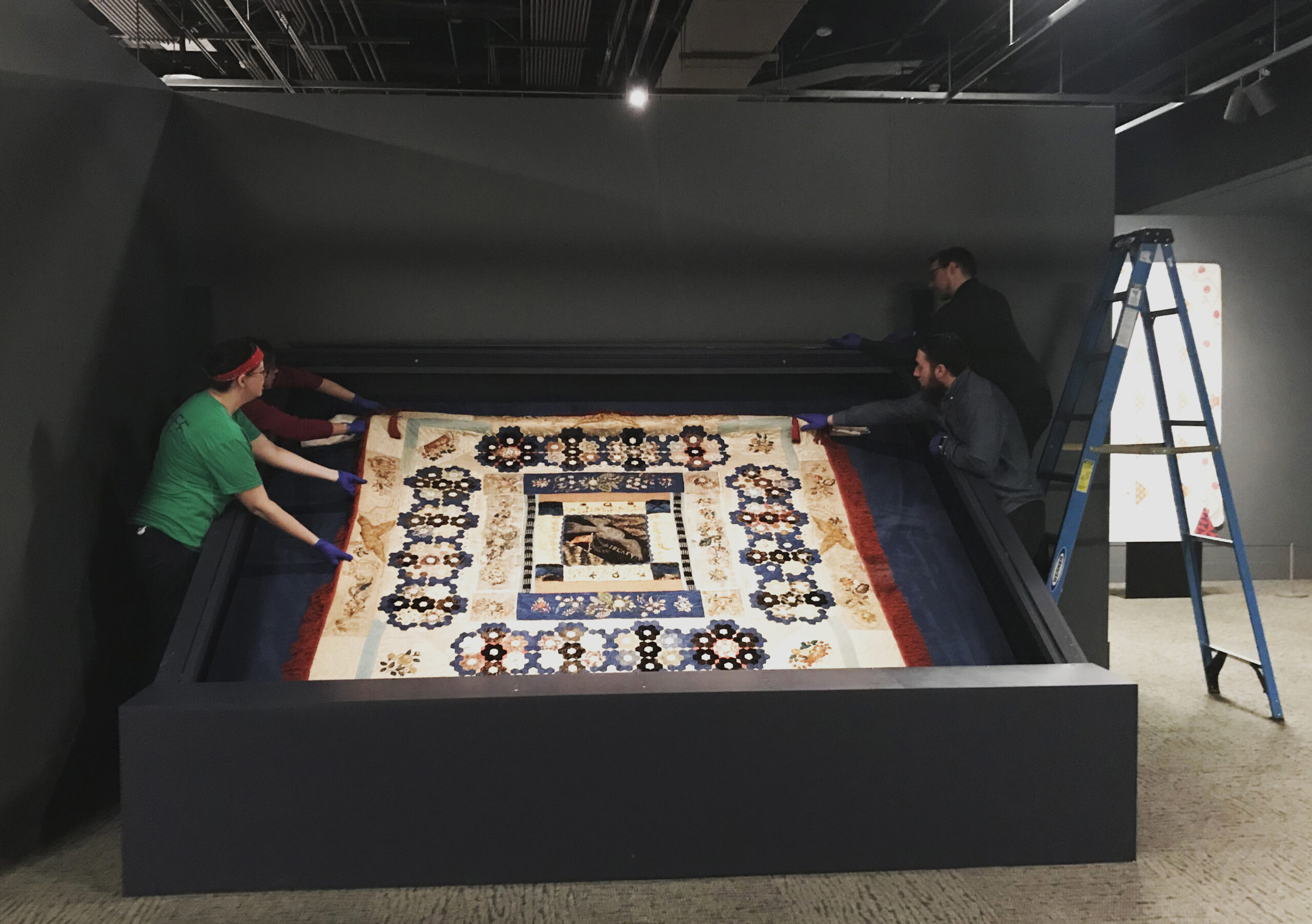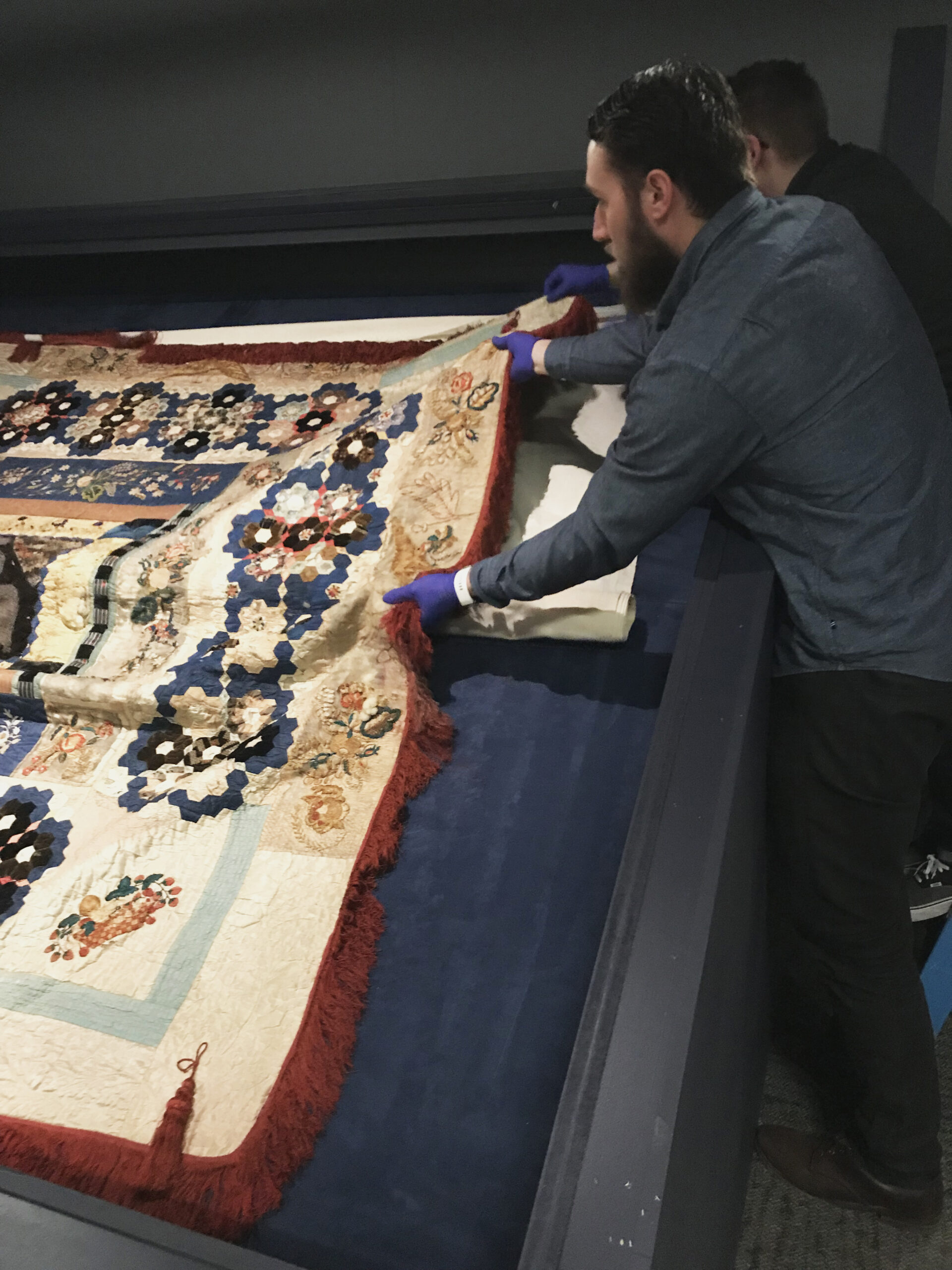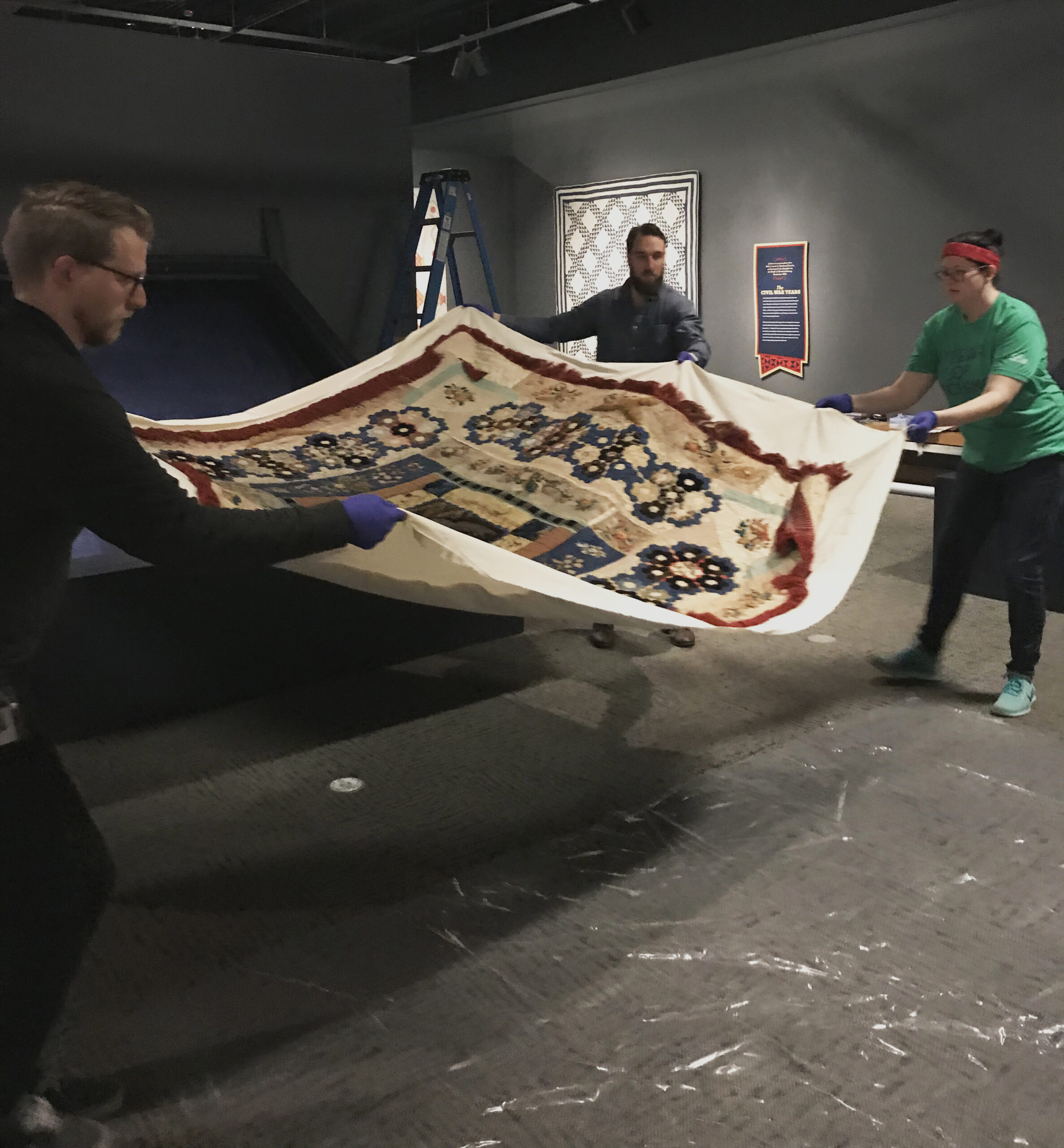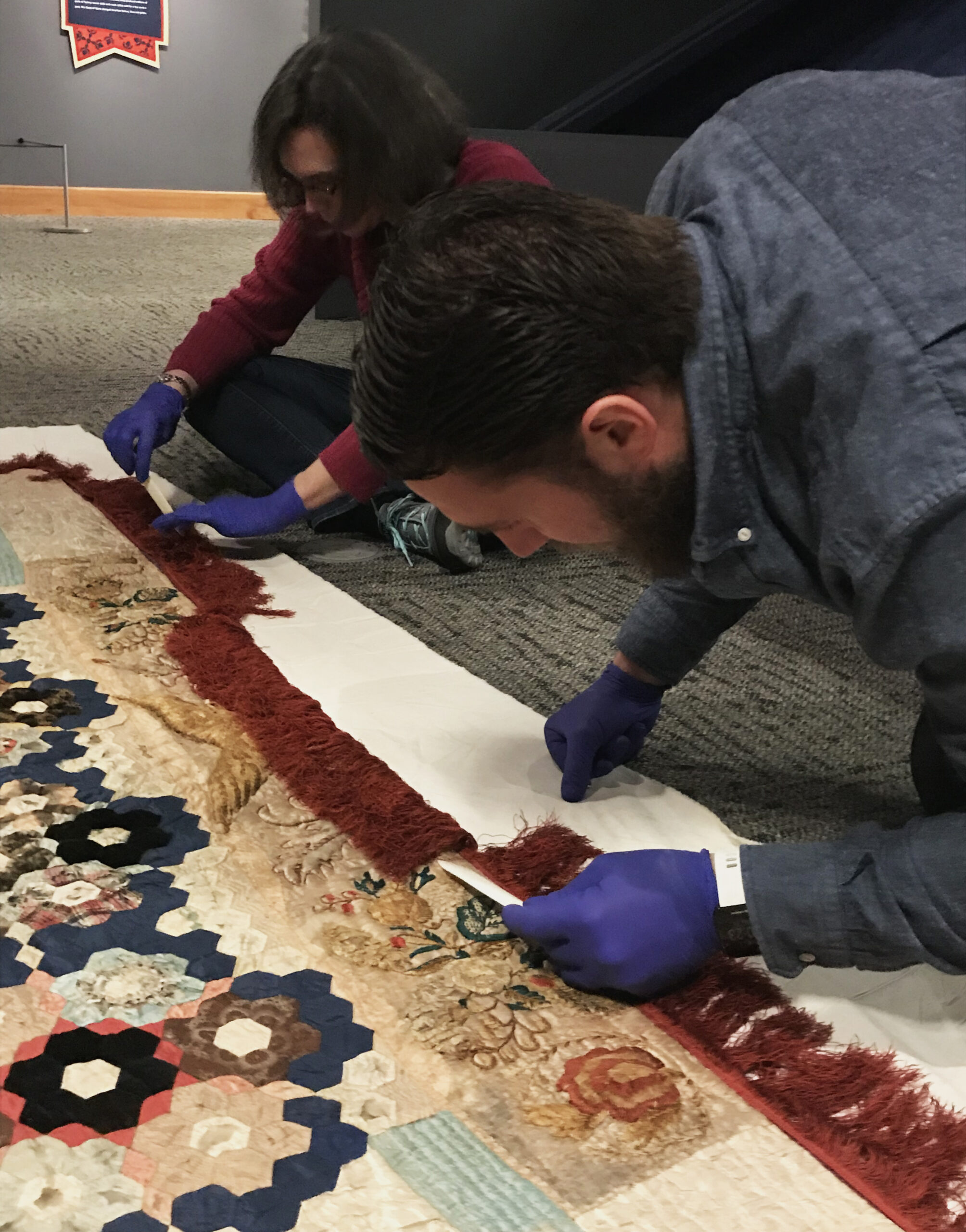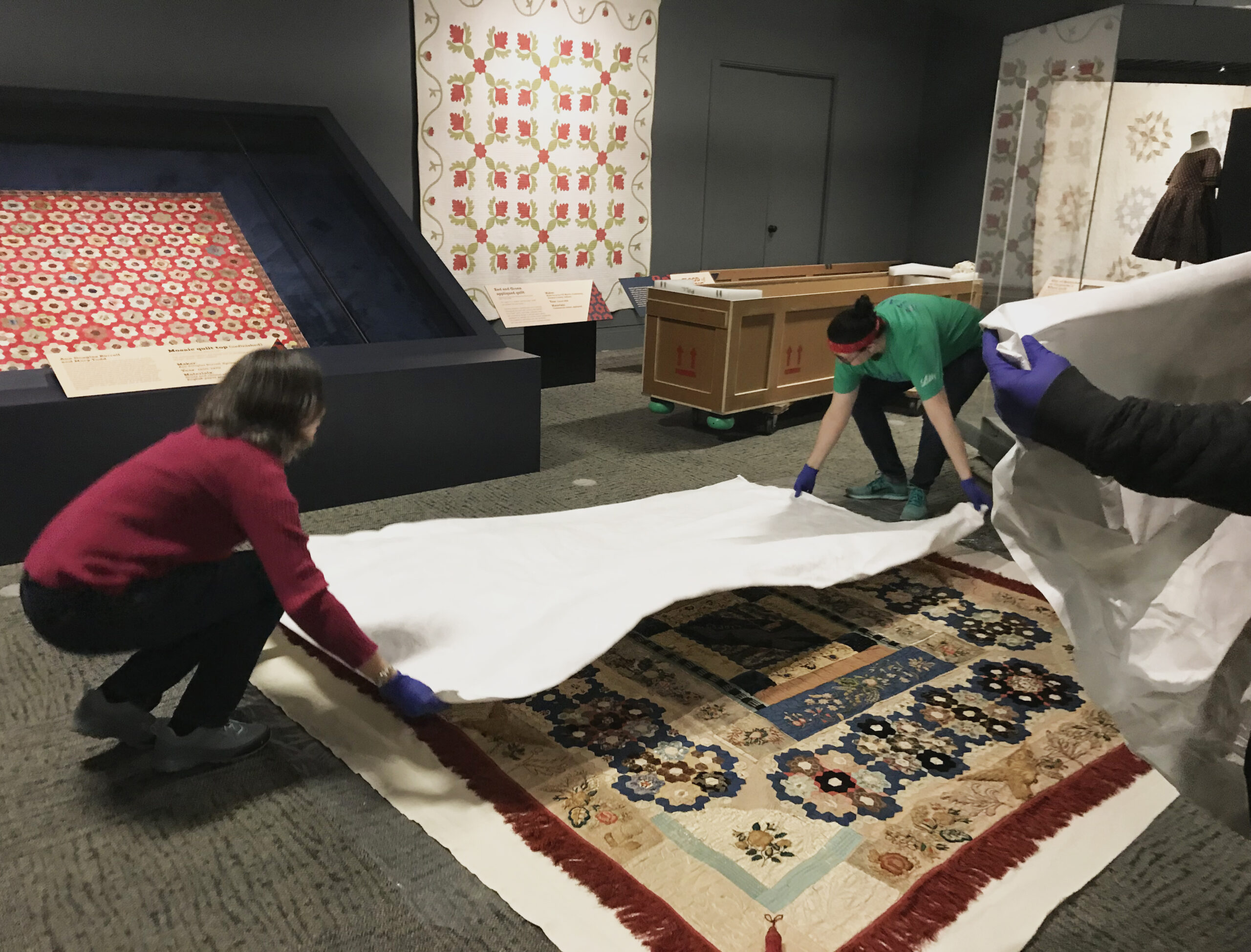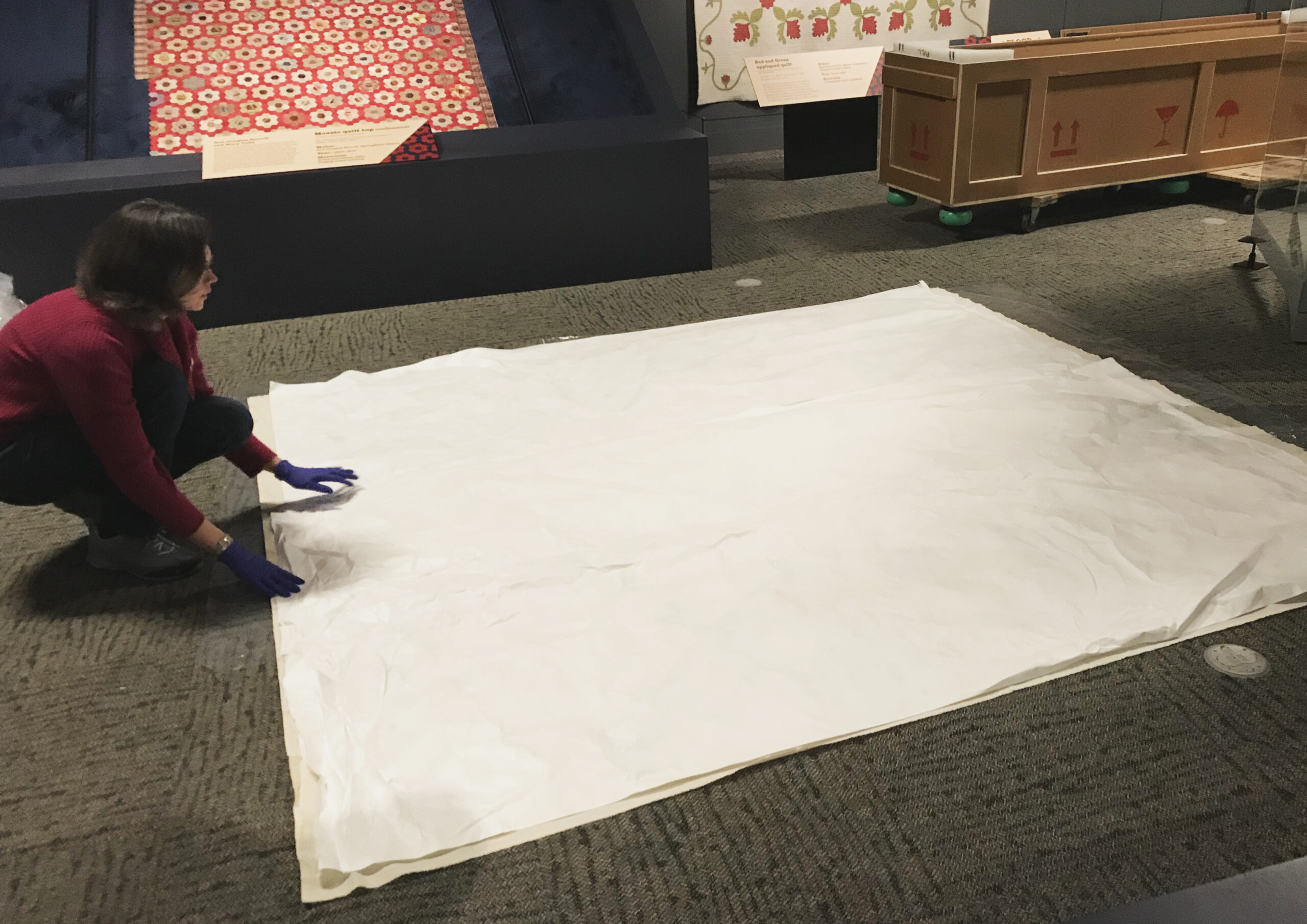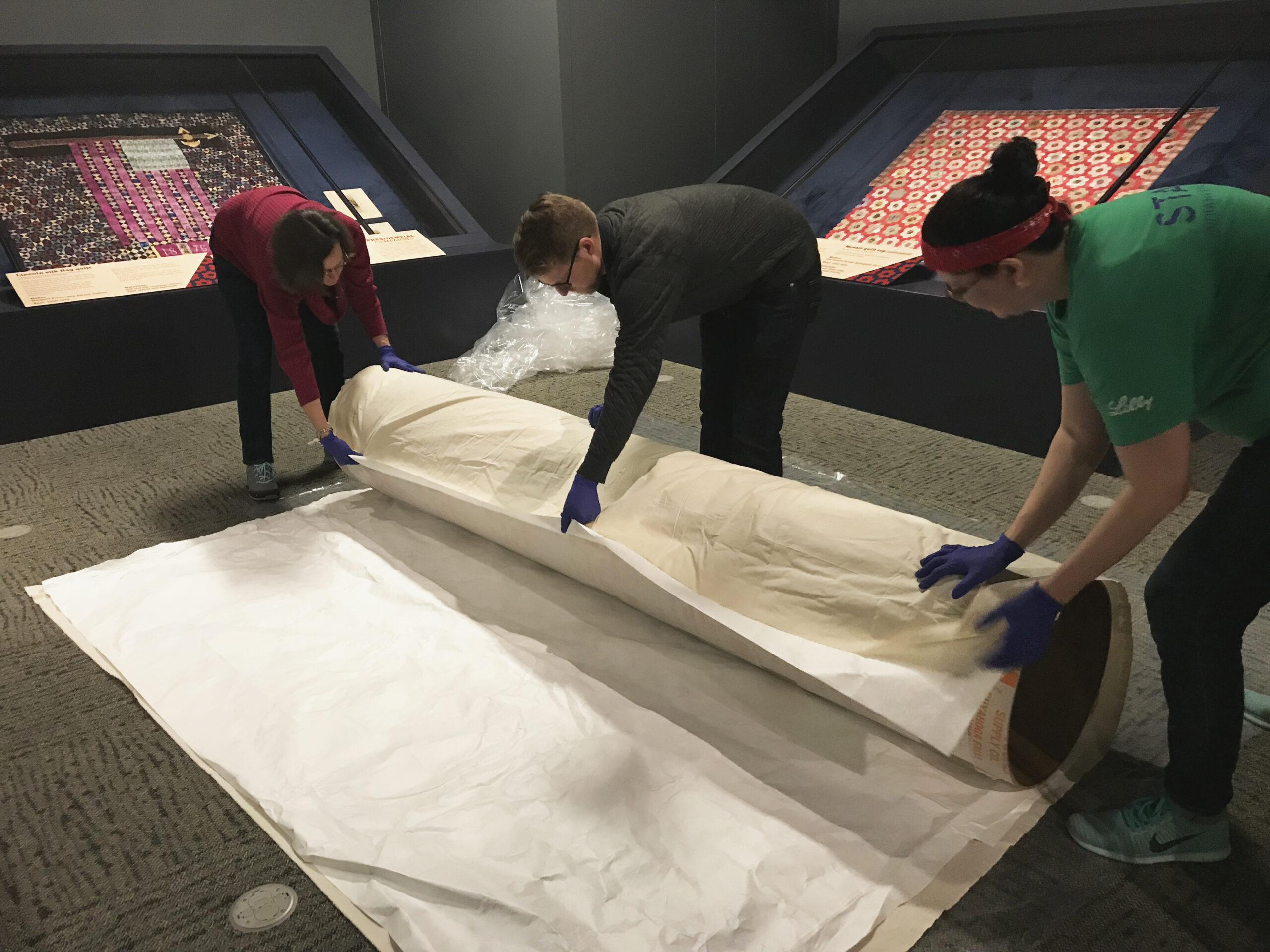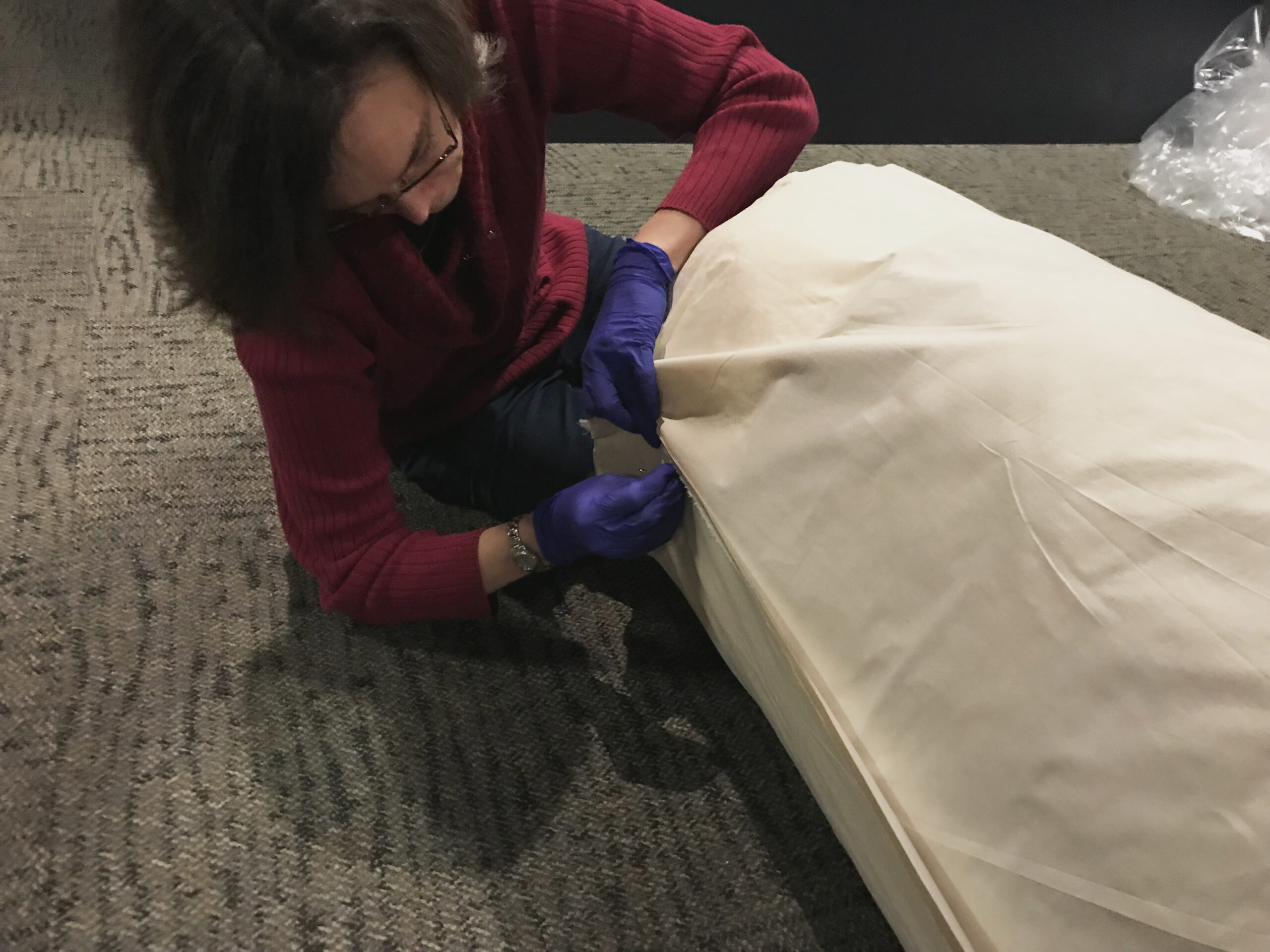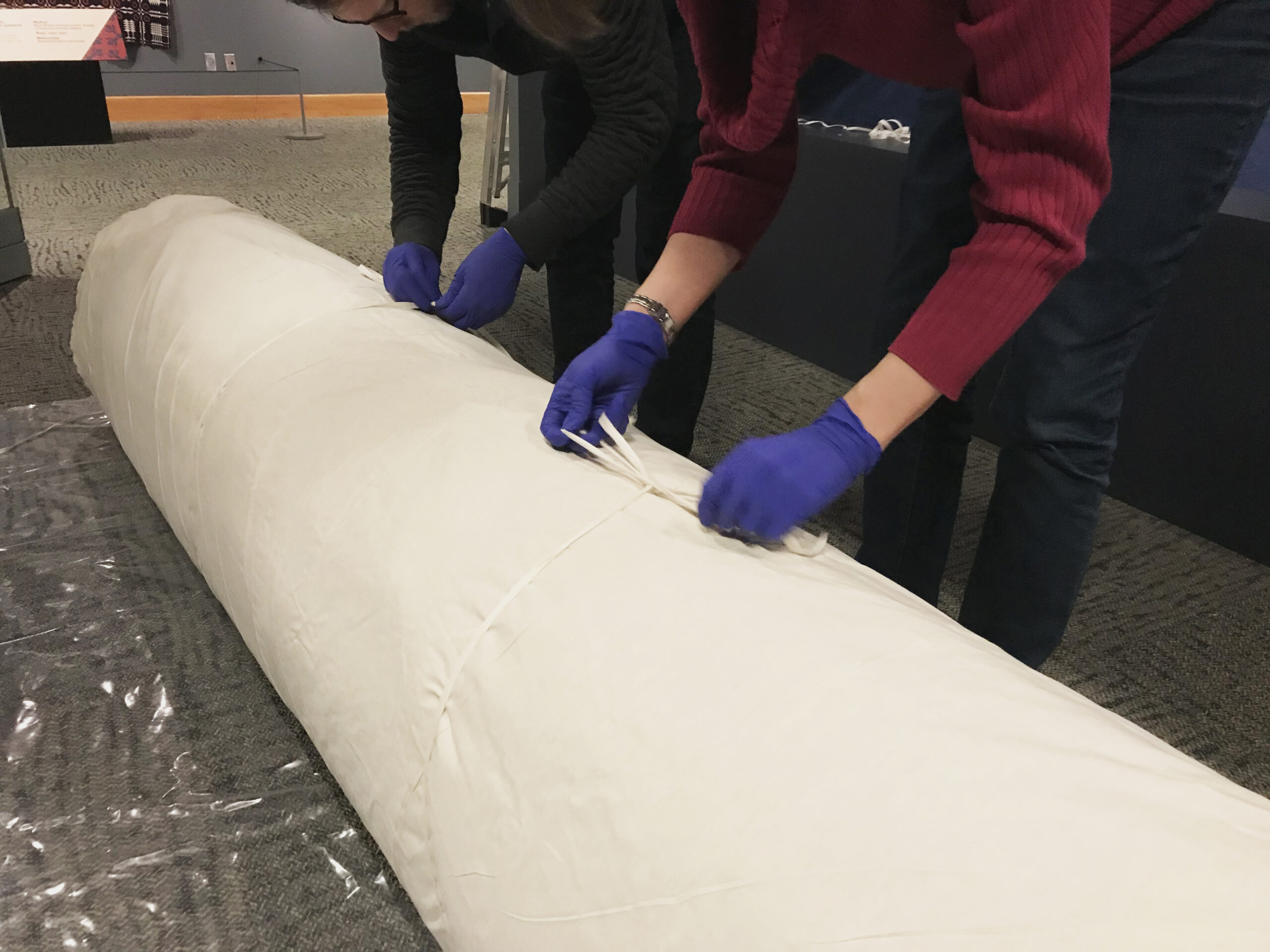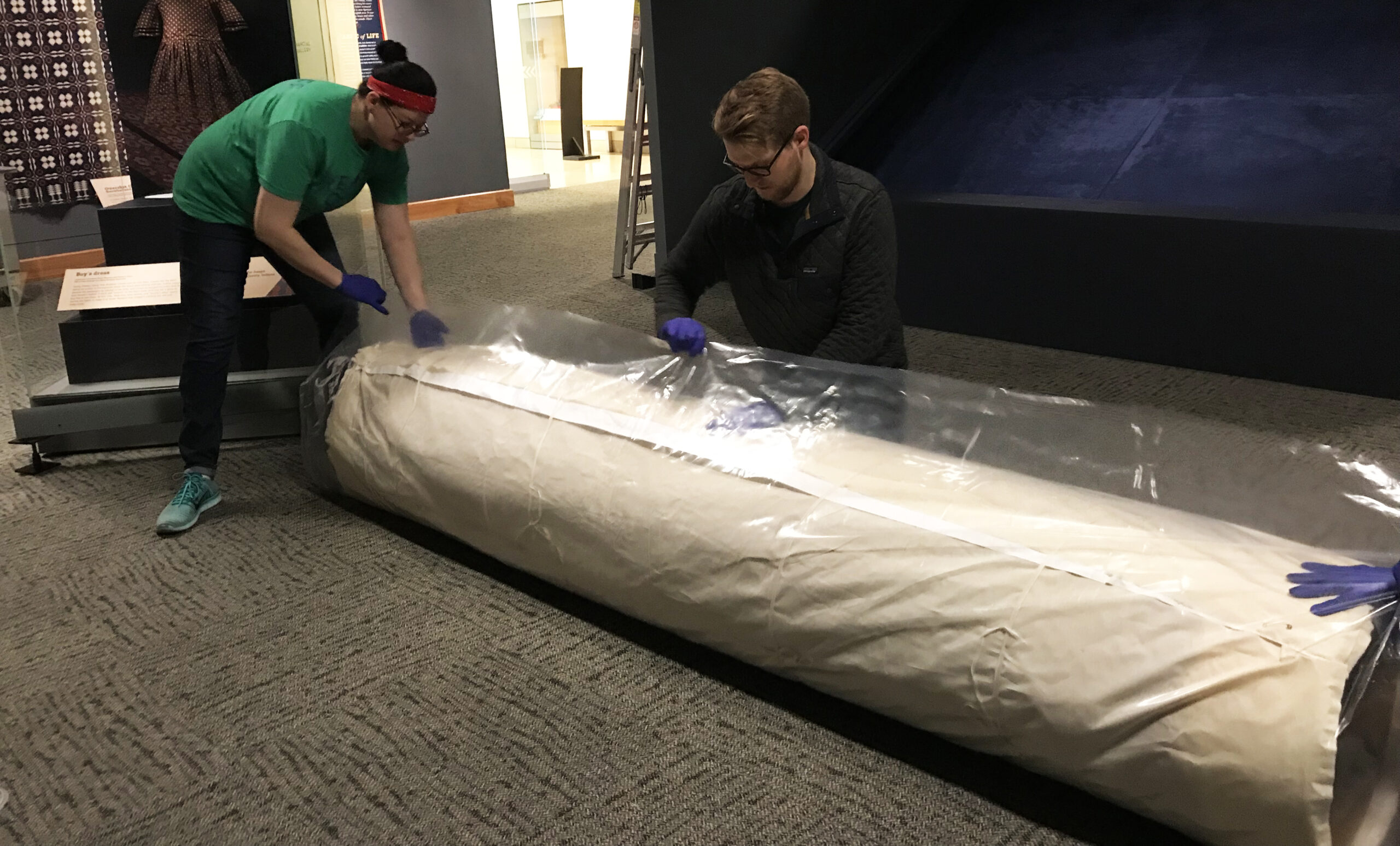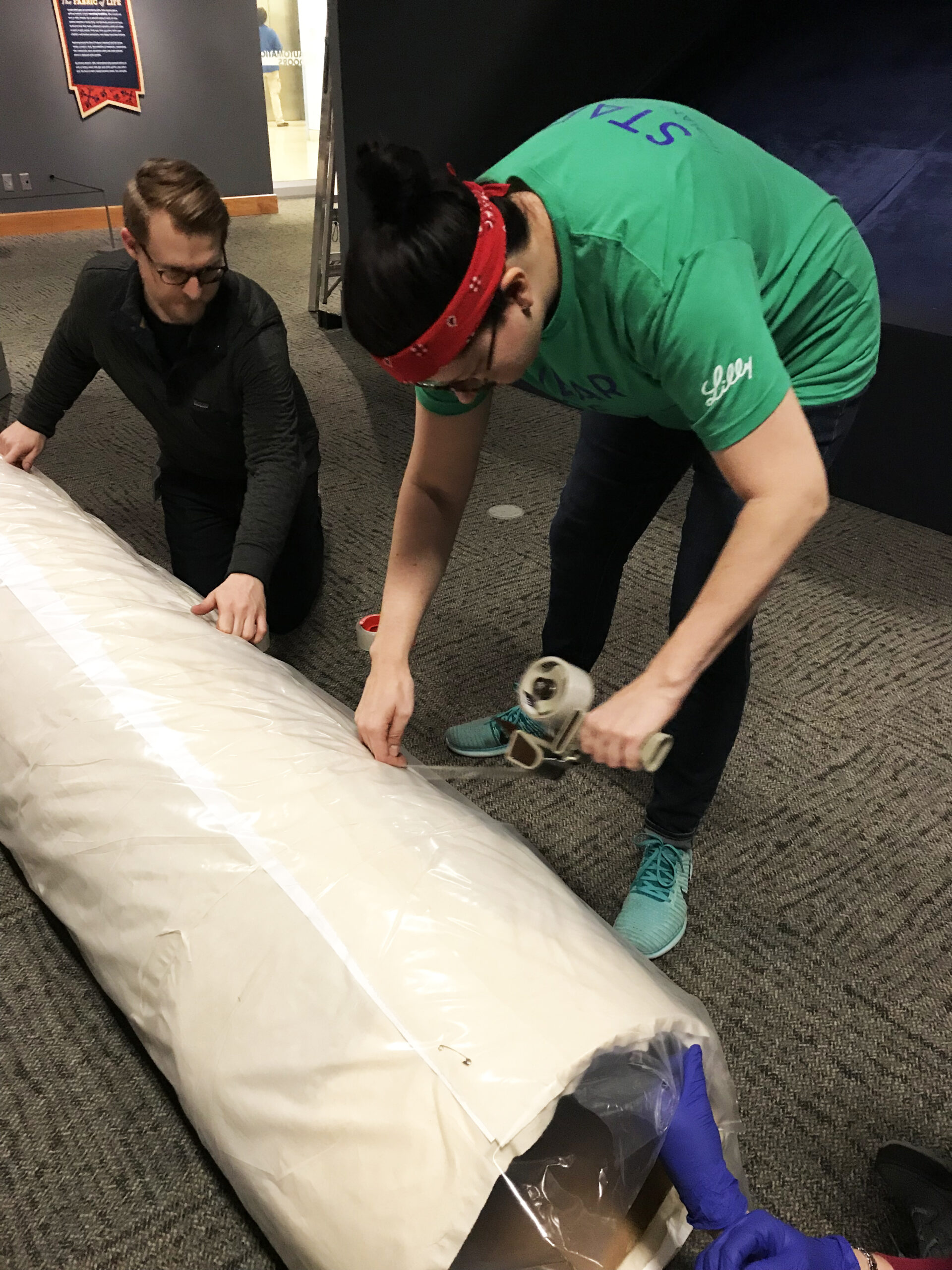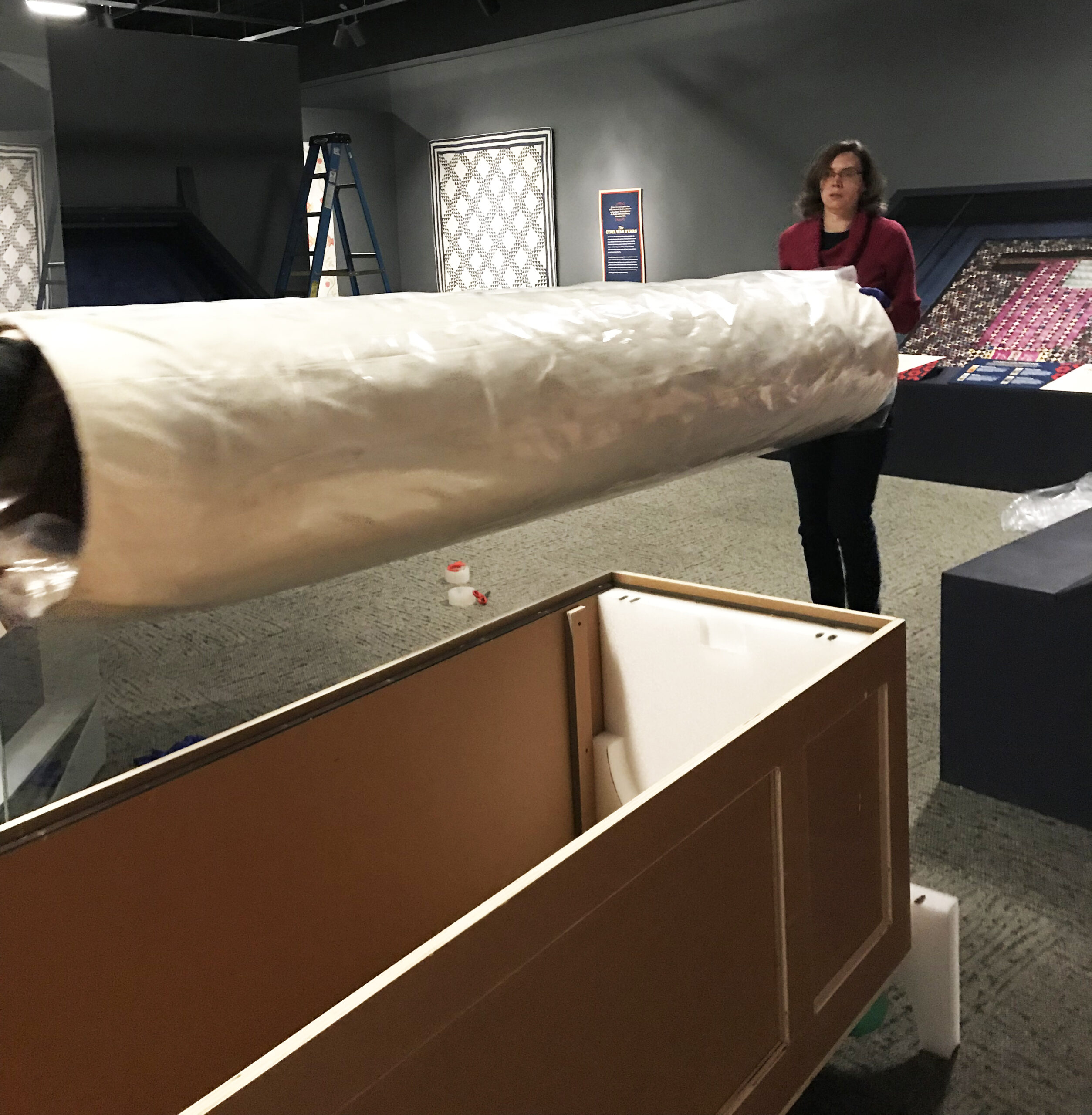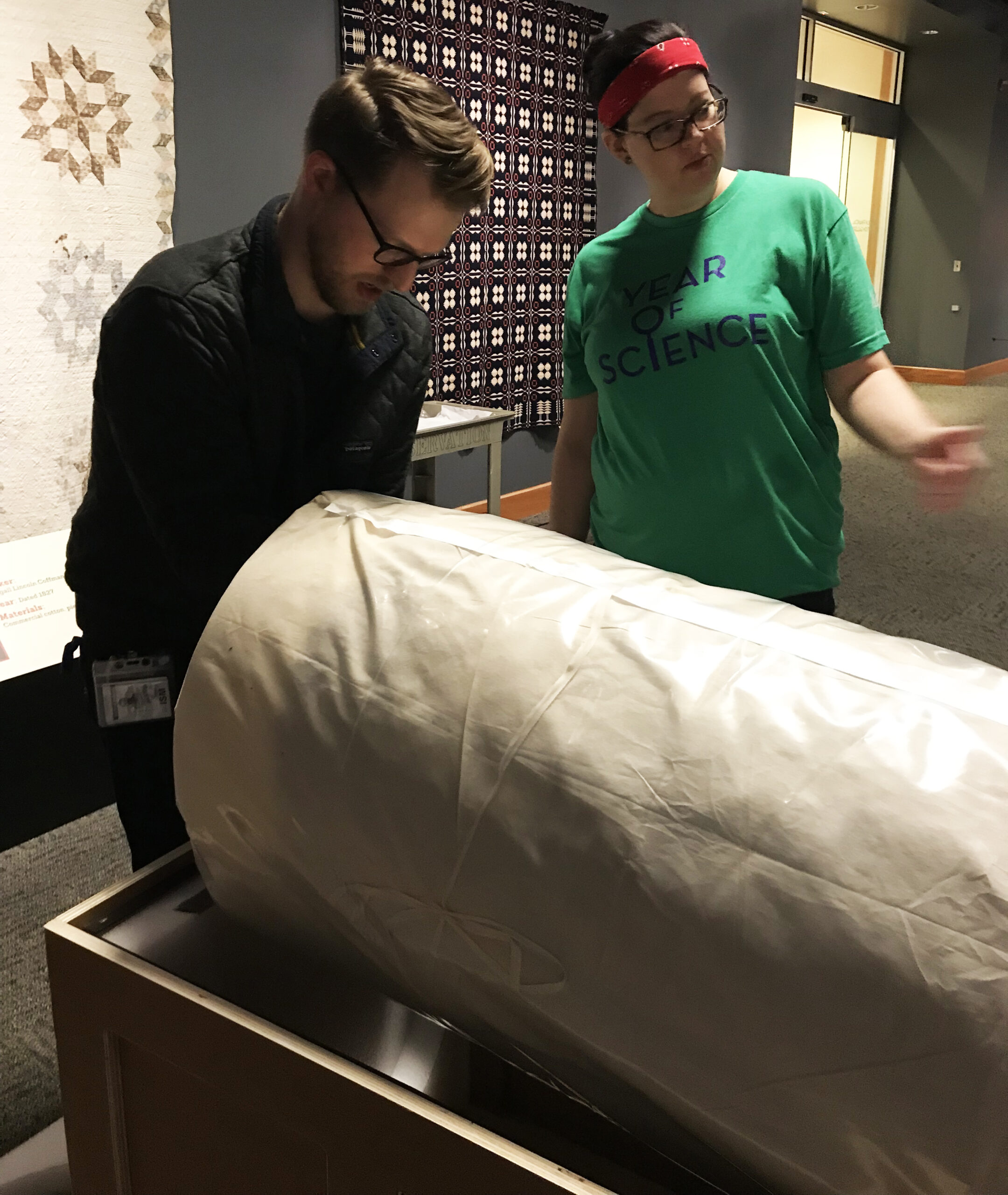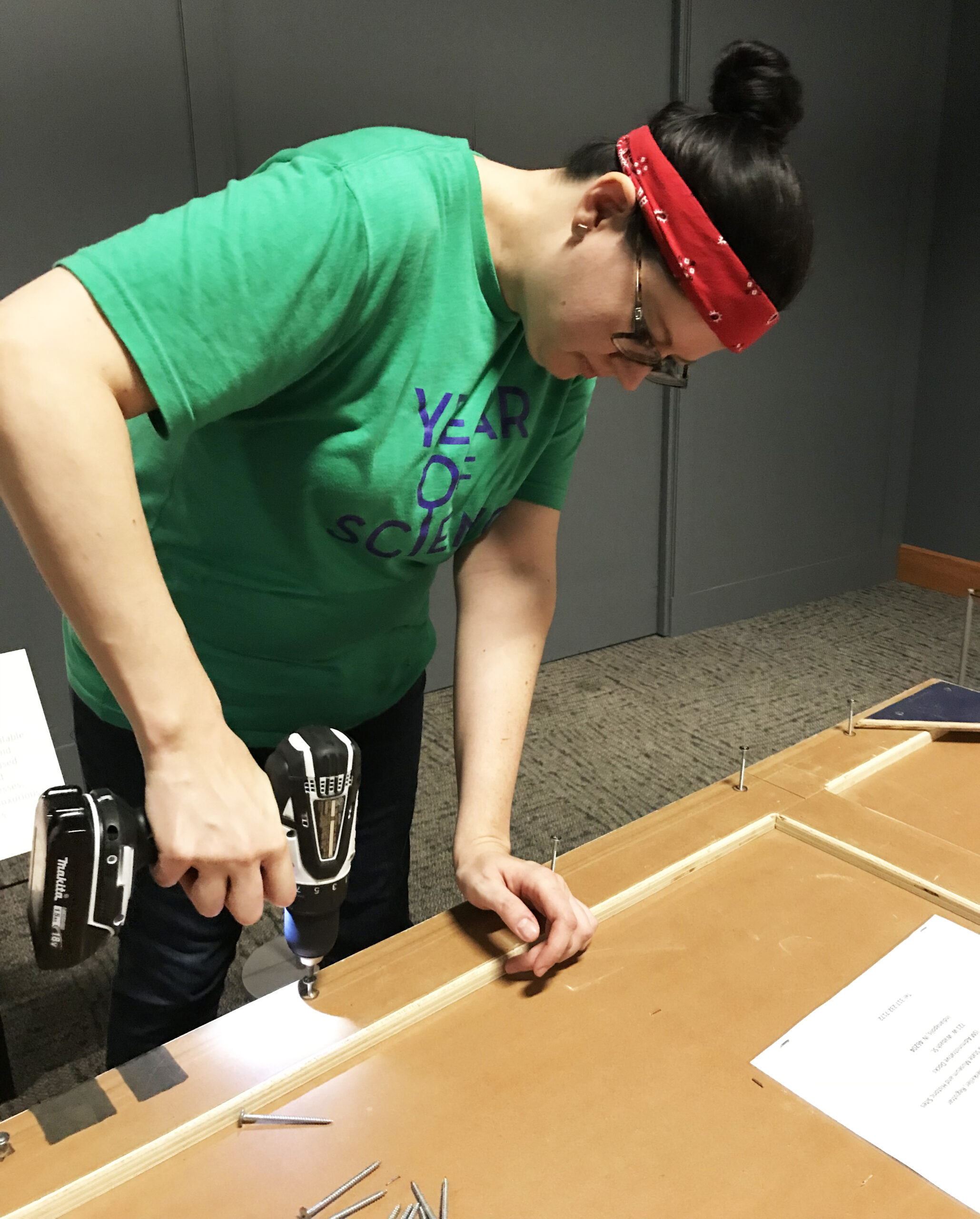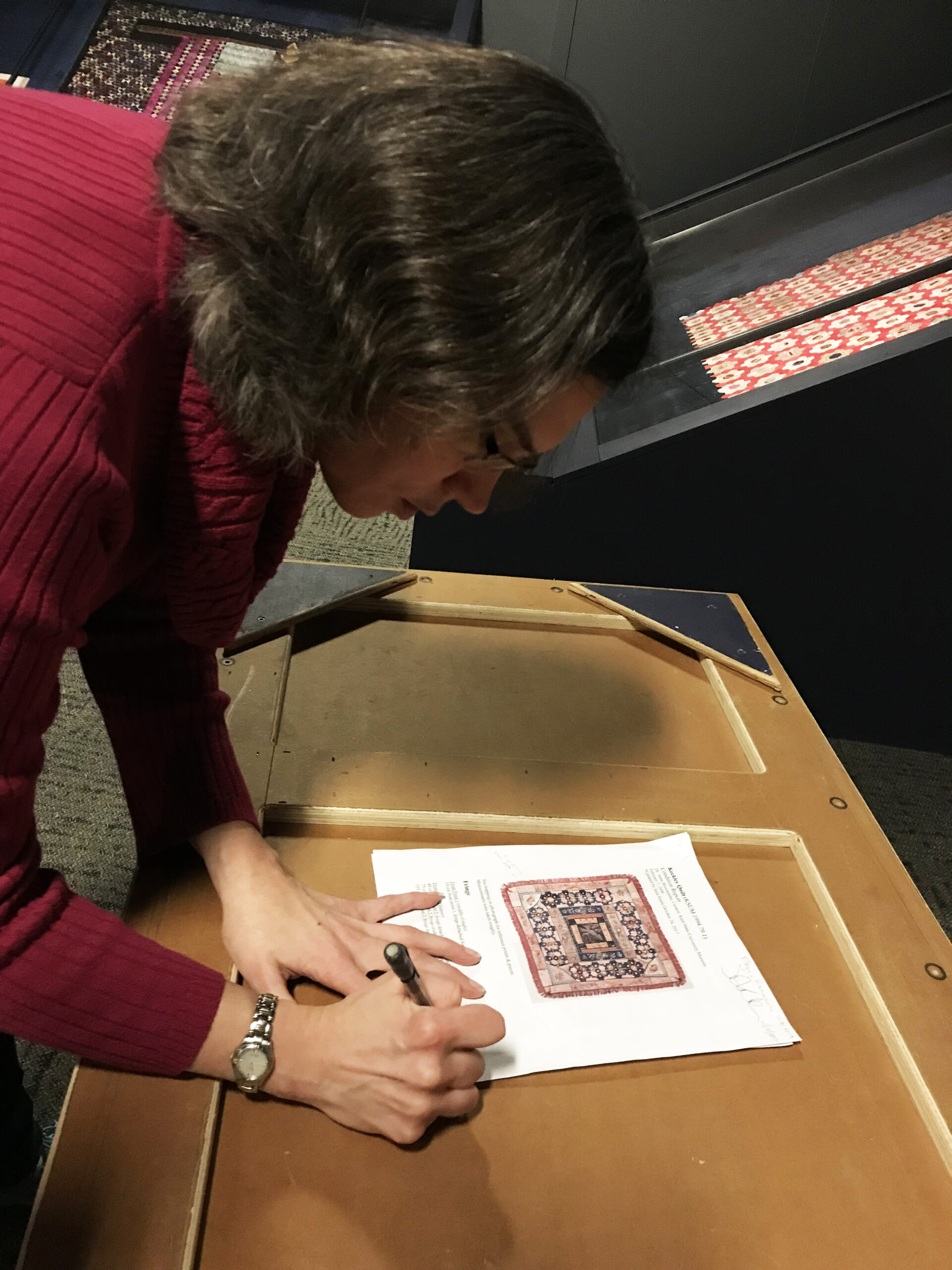Staff Report
When visitors walk into a gallery at the Indiana State Museum, they likely don’t notice the subtle changes. The lights are a bit dimmed. Overhead, spotlights highlight objects on the walls and in cases – each light set to the perfect level. There might be a drop in temperature, depending on the artifacts on display.
All of that – from the lighting to the thermostat setting – is intentional.
While the Indiana State Museum focuses much of its attention on creating dynamic, engaging experiences for guests, staff must also follow specific guidelines when handling and presenting museum objects. A team is specially trained to do just that.
Take, for example, a quilt made more than 150 years ago by Elizabeth Keckley, Mary Todd Lincoln’s dressmaker. Simply hanging this treasure on the wall in a hallway will damage the fragile textiles, and bright overhead lights and camera flashes will fade the colors. Over time, this national treasure would be destroyed under those conditions.
The Lincoln in Quilts gallery closed this week, so we ducked in to see our staff from collections management in action deconstructing the gallery. In this slideshow, watch as the team takes painstaking steps (requiring about an hour’s time) to safely remove the quilt from its presentation case and pack it to travel safely back to its home at Kent State University Museum, which generously lent it for the Indiana State Museum’s exhibit.



